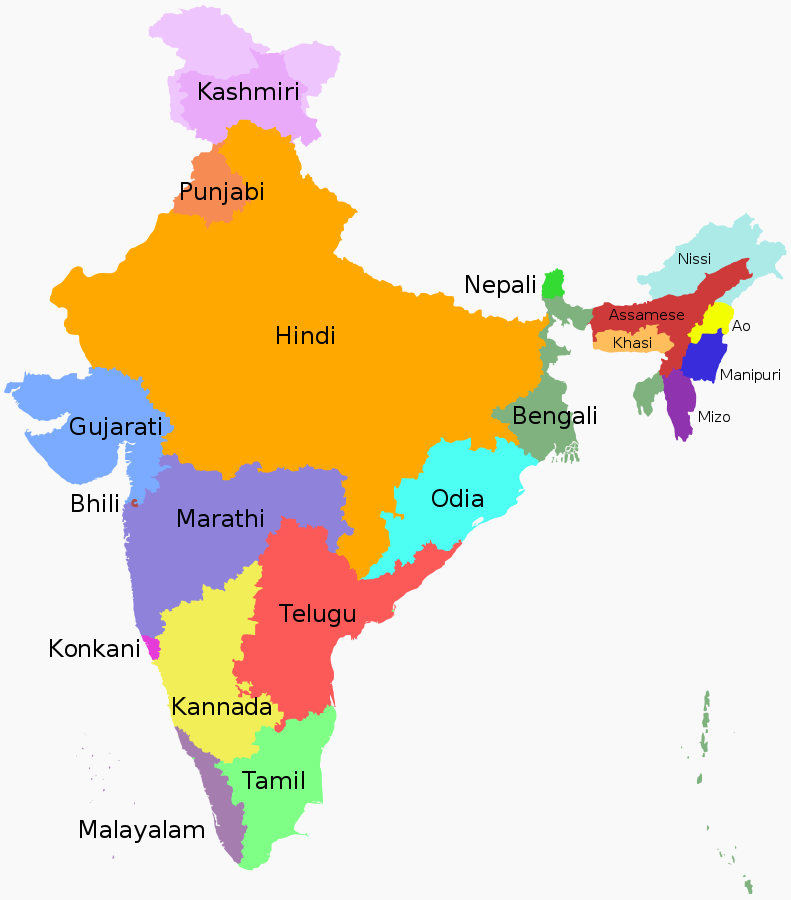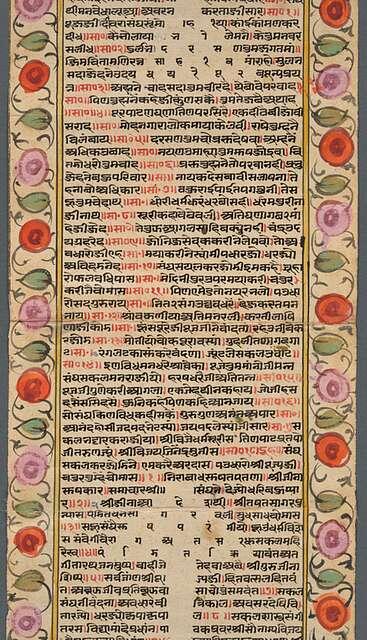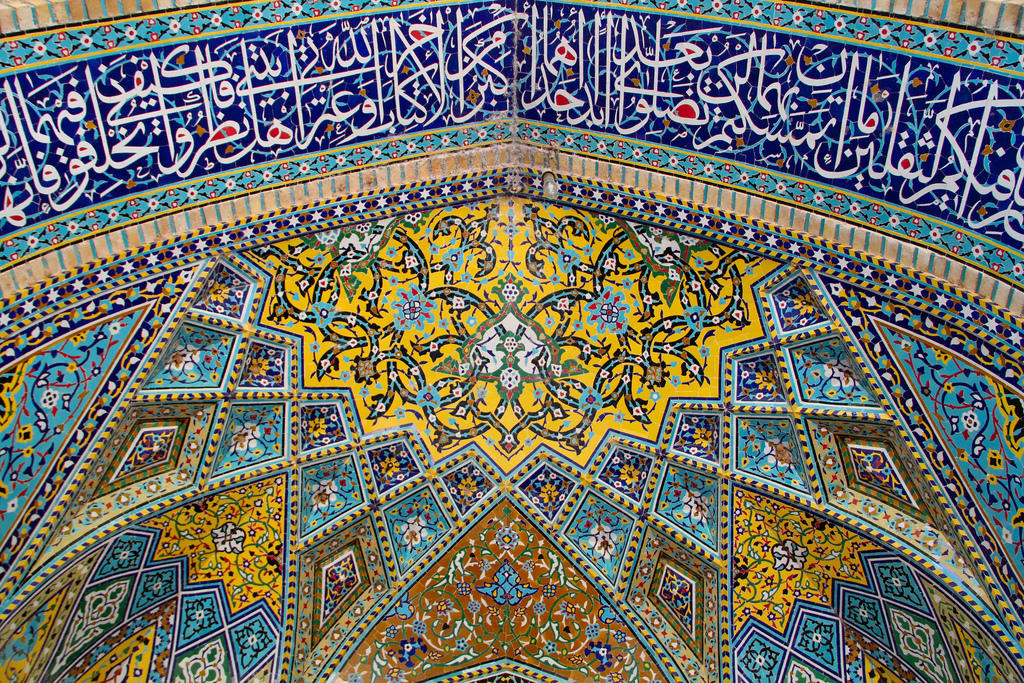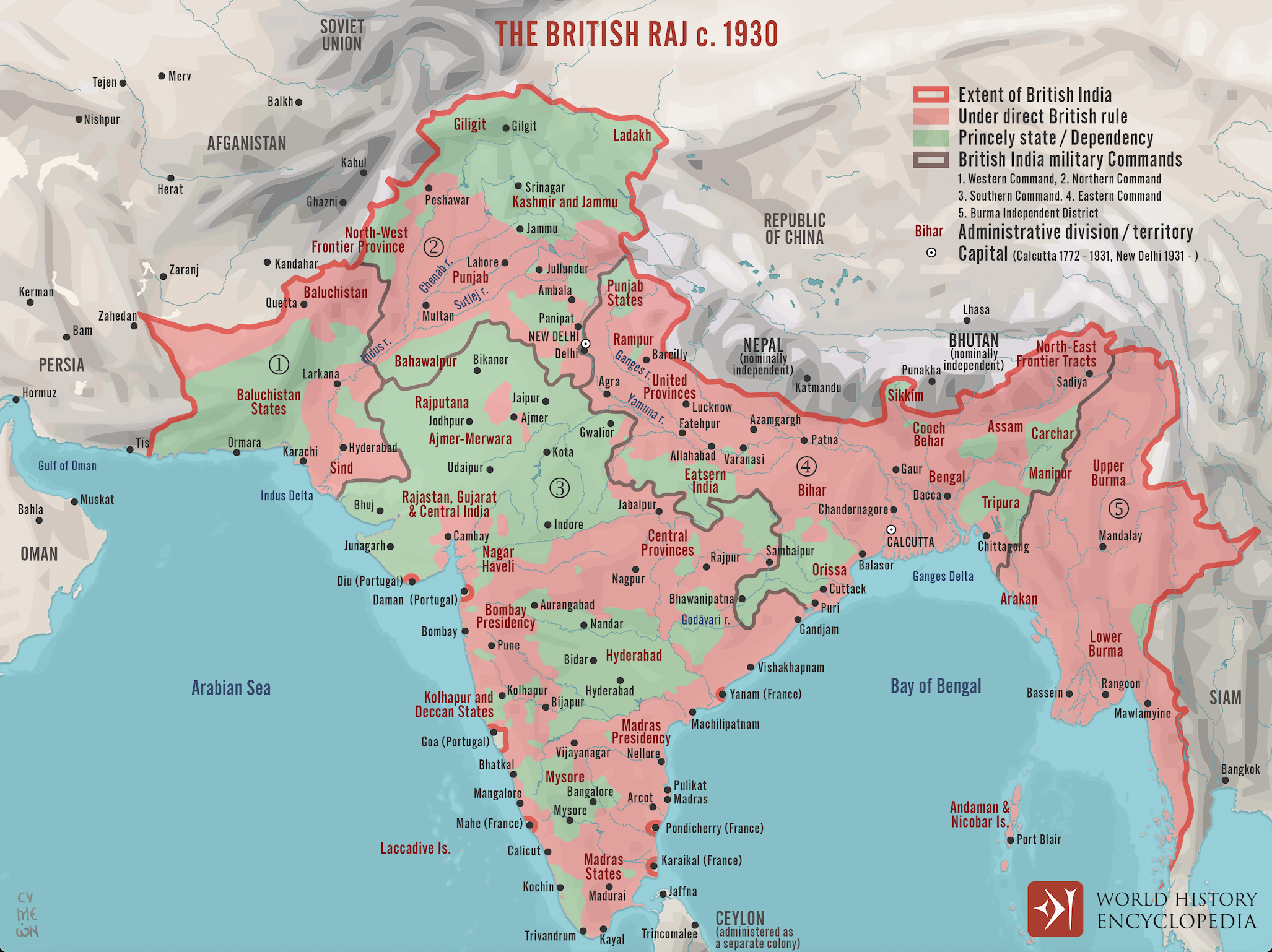There are many languages in India - depending on the definition, the number is thought to exceed a thousand. India is one of the few countries that does not have a national language, though both English and Hindi are the official language of India used by the government - and the language spoken or at least understood by most of its inhabitants, is Hindi.
So where does Hindi come from and what is its place among the languages of the world?

Language Families in India
India is a land rich in languages. Hundreds of languages and dialects co-exist, some of the spoken by only a few hundred people. What sets it apart is not just the number of languages, but that they stem from entirely different language families, making the origin of Hindi language especially fascinating in this broader context.
| Language Family | Examples | % of Indian Population |
|---|---|---|
| Indo-European Languages | Hindi, Bengali, Punjabi, Marathi, Odia | Approx. 78% |
| Dravidian languages | Tamil, Telugu, Kannada, Malayalam | Approx. 19% |
| Others | Austroasiatic, Sino-Tibetan, Tai-Kadai | Approx. 2-3% |
About 78% of Indians speak a language belonging to the Indo-European language family, to which English also belongs. However, they do not belong to the same sub-group. The Indian languages are part of the Indo-Iranian languages, forming a subgroup called Indo-Aryan.
The oldest Indo-Aryan language attested in India is Vedic Sanskrit, with texts dating to the 2nd-1st millennium BC transmitted orally before being set down in writing - for example, some of the sutras of the Rigveda, an important collection of Hindu hymns.

So, is Hindi a language or a group of dialects? Linguistically, Hindi is a standardised and Sanskritised form of Hindustani, and it’s officially recognised as one of India’s official languages — alongside English — used by the Indian government for communication, education, and administration. If you’ve ever wondered when was Hindi language invented, the answer lies in its gradual evolution from ancient Indo-Aryan languages like Sanskrit.
India also hosts languages belonging to the Austroasiatic (Munda), Sino-Tibetan, Tai-Kadai and a few other linguistic groups and isolates.
Check for the best Hindi classes Toronto here.
Hindi’s Connection To Sanskrit and Other Ancient Languages
The Hindi language evolved from Sanskrit, an ancient Indo-European language.

Sanskrit
Based on linguistic grounds, Vedic Sanskrit could date as far back as 1500 BC. Some of the oldest pieces of Hindi literature, such as some of the hymns of the Hindu compilation called the Rigveda, were written in Vedic Sanskrit.
You can find the best Hindi lessons on Superprof.
Around 800 BC it morphed into Classical Sanskrit, a language mostly spoken by the upper class, which remained the classical literary language in India for a long time. Though few still speak it, it is still taught in schools the same way that Latin is taught as the classical literary language of Europe.
Find a Hindi class anywhere in the UK.
The word “Namaste” comes directly from Sanskrit and is still commonly used in Hindi today!
Prakrit
Prakrit languages evolved from Vedic and Classical Sanskrit. The earliest are attested around 500 BC; the latest around 800 AD. Linguists differ as to whether all Middle Indo-Aryan languages should be grouped under the term Prakrit; as it is, most of the Indo-European languages of India evolved from one or more of them.
Some were Dramatic Prakrits, that is to say, languages used almost exclusively for literature and plays. None of these was used in everyday speech and very often Sanskrit translations were provided so the reader could understand the dialogue. However, as Sanskrit lost ground in certain areas, some dramatic Prakrits devolved into vernacular languages, such as Maharashtra Prakrit, the ancestor of the Marathi language.

The most important Prakrit language was Ardhmagadhi Prakrit, and its grammar is usually used as the standard to teach other Prakrits. In regions where Hindi would later be spoken, however, Sanskrit remained very popular, so that the etymology of many Hindi words comes directly from Sanskrit rather than through a Prakrit language.
Check out online Hindi lessons Toronto on Superprof.
The way to Hindustani
In northern India around 500 AD, the Apabhramsha dialects evolved from Prakrit. They served as a kind of lingua franca in use until the 13th century AD and were referred to as Hindavi by the Persian rulers of the Delhi Sultanate who ruled large swathes of India from 1206 to 1526. The Hindi languages started branching off from Apabramsha around the 11th century AD, most of them being entirely distinct by the 12th, though in many places the Apabhramsha languages were still spoken in parallel.
It was under the Delhi Sultanate that the Persian language first started mixing with the local Apabhramsha dialects to form what would later become the Hindi and Urdu language.

In 1526, the Moghul Empire, a persianised empire of Turko-Mongol descent, supplanted the Delhi Sultanate and ruled over much of India, allowing even more Persian loanwords to enter the language.
By the time the Moghul Empire slowly dissolved in the 18th century, Khari Boli or Khariboli vernacular, successor dialects to the Apabhramsha languages, had replaced Persian as the common language.
The variant of Khariboli used by the upper class in northern India became known as Hindustani.
Find a course in Hindi thanks to Superprof.

Evolution of Hindi from Ancient Times to Modern Day
The origin of the Hindi language is deeply rooted in India’s rich linguistic history. From ancient Sanskrit to the modern-day vernacular, Hindi has evolved through centuries of cultural exchange, invasions, and literary growth.
If you’ve ever wondered, “When was the Hindi language invented?”, the answer lies in a long timeline of transformation and adaptation. Below is a quick overview of key milestones in the evolution of Hindi — a language that continues to grow and influence the world today.
1500 BCE
Vedic Sanskrit emerges - the earliest form of Sanskrit.
800 BCE
Classical Sanskrit became the dominant literary language.
500 BCE - 800 CE
Prakrit languages evolved from Sanskrit, used in plays and literature.
500 CE
Apabhramsha dialects appear, forming a linguistic bridge.
1206 - 1526
Persian mixed with local dialects under the Delhi Sultanate.
1526 - 1700s
Mughal rule introduced more Persian words -> Hindustani forms.
1800s
British adopted Hindustani (Urdu) as the administrative language.
1947 - present
Hindi became one of India's official languages, and Urdu became official in Pakistan.
Hindi’s Spread Across the World: Diaspora and Influence
Throughout its history, the Hindi language has absorbed loan words from many different sources, reflecting centuries of cultural exchange.
The main outside influence on the Khariboli dialect — which later evolved into Hindustani — was Persian, introduced by administrators and soldiers during the Delhi Sultanate and later reinforced under the Moghul Empire. Many Arabic words in Hindustani also arrived via Persian, which already had numerous Arabic loan words.
Hindi also has Portuguese loanwords like mez (table) and kamiz (shirt) from colonial influence.
During the Moghul Empire and through many successive dynasties, Persian remained the court language. However, when the British colonised India in the 18th and 19th centuries, they sought a widely spoken administrative language. Hindustani fit the bill and was adopted as the official language of the British Indian Empire under the name of Urdu.
Hindustani continues to be used as a lingua franca in many parts of northern and western India today. In modern terms, we refer to the variant spoken in India as Hindi and the one used in Pakistan as Urdu — though the two remain closely connected.
Of course, through English colonisation and modern globalisation, Hindi also has a good number of English loan words such as botal from “bottle” or prafessar from “professor”.

Obviously, other Indian languages have also provided Hindi with new words, just as Hindi words have seeped into other languages such as Tamil or Marathi.
Hindi and Urdu: A Language Split or a Reunification?
Urdu is first attested in the late Moghul Empire as a version of Khariboli with heavy Persian influences called Zaban-e Urdu-e Mualla, the “language of the court (or camp)”. It existed in parallel to Hindi and eventually became the official language of Pakistan when the country was founded.
Both Urdu and Hindi are considered registers of Hindustani - two versions of the same language, much like British English and American English are both registers of English. They remain mutually understandable.

They mostly have the same grammar, but differ greatly in vocabulary, with Hindi borrowing much more heavily from Classical Sanskrit while Urdu borrowed more from Persian. The differences are more evident in the literary register than in everyday speech. There are some differences in pronunciation as well.
| Language | Script | Main Influences |
|---|---|---|
| Hindi | Devanagari | Sanskrit |
| Urdu | Persian (Nastaliq) | Persian Arabic Turkish |
The further evolution of Hindi and Urdu is rather exciting. In some ways, they are drifting farther apart as India and Pakistan have their own unique cultures, both in terms of religion (India is primarily Hindu and Pakistan primarily Muslim) and other aspects. On the other hand, Bollywood movies, with their own brand of Hindi (with many Urdu phrases), are immensely popular in both countries and influence the speech of the younger generation, while young Hindi speakers are more comfortable using Persian or Arabic loan words than before. This is an evolution that could go either way:
- Hindi and Urdu can continue to drift apart and become separate languages in truth.
- Hindi and Urdu can continue to influence each other so that their differences slowly erode.
Either way, the future of Hindi and Urdu will be an interesting one!
So as you see, learning to speak Hindi will mean getting to know a language with a long and literary past and an exciting, dynamic future.
Hindi’s Linguistic Features and Regional Variations
Modern Hindi is known for its phonetic script, gendered nouns, and sentence structure that typically follows a Subject-Object-Verb (SOV) order. While the standardised version used in media and education is based on the Khari Boli dialect, Hindi sounds quite different depending on where you are in India.
From the melodic tones of Awadhi in Uttar Pradesh to the punchy rhythm of Bhojpuri in Bihar, regional variations of Hindi bring flavour and local identity to the language. Even everyday vocabulary and pronunciation can shift between states — and many people mix Hindi with English in daily conversation, giving rise to what’s often called Hinglish.
So, whether you’re interested in literary Hindi, Bollywood-style dialogue, or street-level conversation, there’s always more to discover. Learning Hindi means exploring a language that’s not just spoken but lived, adapted, and celebrated in countless ways across India and beyond 🌏🗣️















